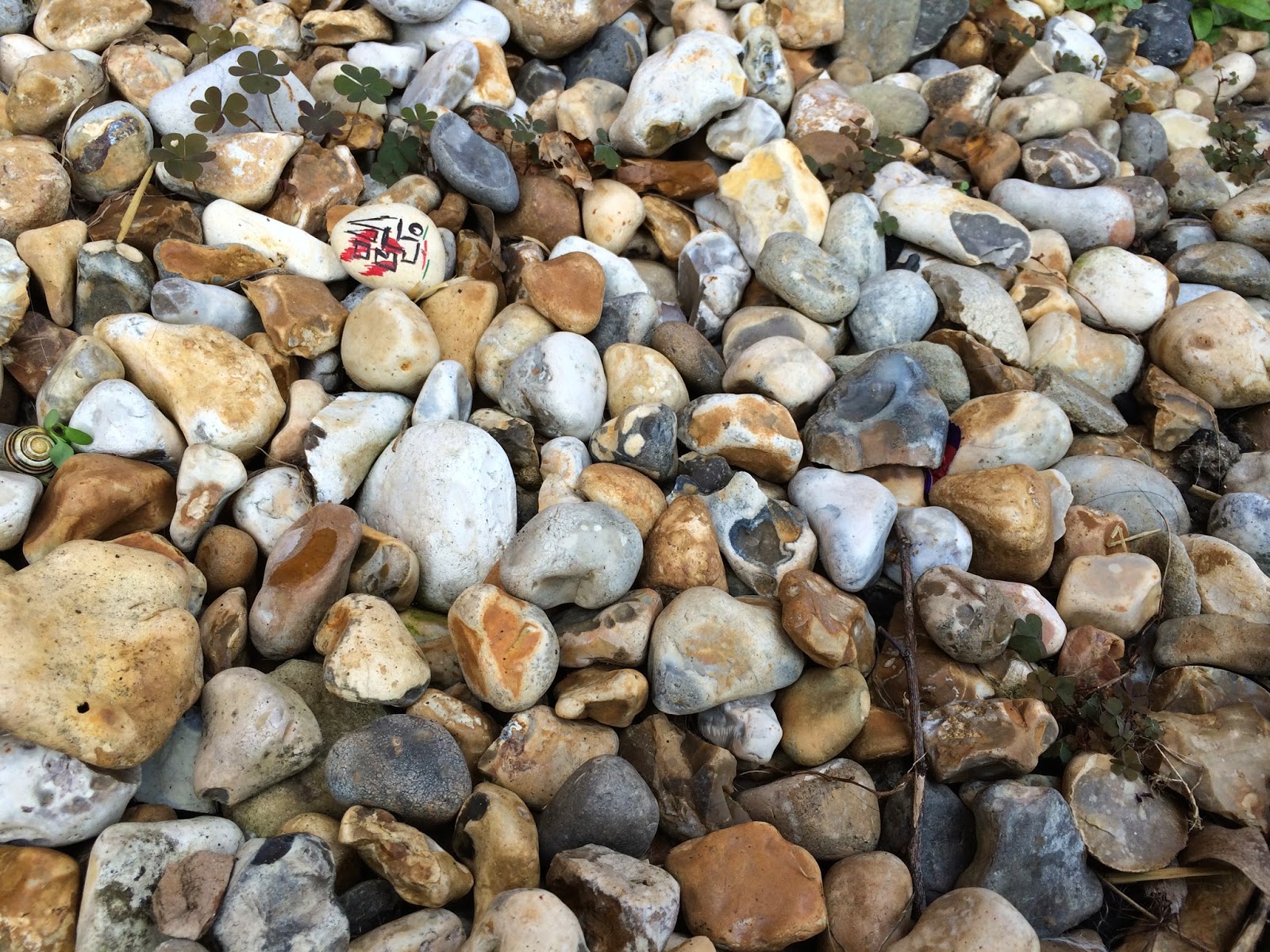I started with the simple idea of taking a stone, modifying it using my primary research photos, and then placing it back where I found it. At a quick glance the modified stones were quite unnoticeable. However on more careful observation they stood out against the regular stones surrounding them.
I find this concept very intriguing and so will develop it further. I will do this by conducting more experiments, perhaps experimenting with the subject matter, style of intervention, or the environment in which I conduct the experiments.
I used a range of techniques to decorate the stones so that I could explore which proved most effective.
I started by using a 5B pencil. This was soft enough to be noticeable on the stone, however at certain angles the pencil drawing reflected the light preventing the drawing from being noticeable. This could be viewed as a pro or con. If I wanted to create an intervention that was bold and always noticeable when viewed closely enough then the pencil wouldn't be an effective material. However if I wanted the stone to blend in more and not always be noticeable then the pencil would prove an effective material.
I next used a black permanent marker pen. This proved bolder than the pencil however when placed amongst the stones, blended in effectively. This could be due to the simplicity of the design, as a complex design may have appeared a lot more bold and prominent. Although bold, the black pen still appeared quite natural among the stones.
Leading on from the black pen I used coloured permanent marker pens. These created dynamic, eye catching, bold drawings that appeared a lot more artificial than the pencil and black pen drawings. If I wanted my intervention to be fairly quick and easy to find, this would be an effective material to use.
Lastly I experimented with acrylic paint. I chose acrylic as I knew this would be the most effective paint I had available to me at sticking to the stone (watercolour paint may have run off). The red paint, similar to the coloured marker pens, dried bold and eye catching, yet harboured a more natural appearance than the pens. This would be an effective material to use if I were aiming to create a colourful yet natural aesthetic for the stone.
I feel this was a successful experiment as I gained knowledge on the best materials to use for this type of intervention, and produced effective intervention based work. I think it was effective as it was only noticeable when looked at closely, which was my aim.
I could develop this idea further, perhaps buying a plant in a pot that has stones in, and placing a small modified stone in this. I could also transfer the idea into other areas, perhaps intervening with nature, everyday scenes, public places, etc.
If I had more time I would take a collection of modified stones and shells to the beach, recording the reactions of the public, and exploring the types of people that noticed the artwork, what they did with it, how they reacted, etc.













No comments:
Post a Comment